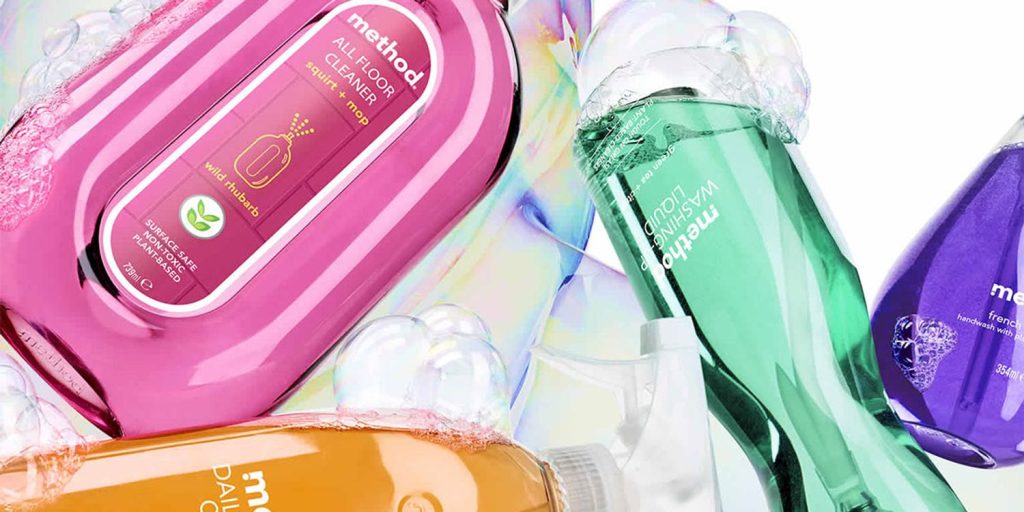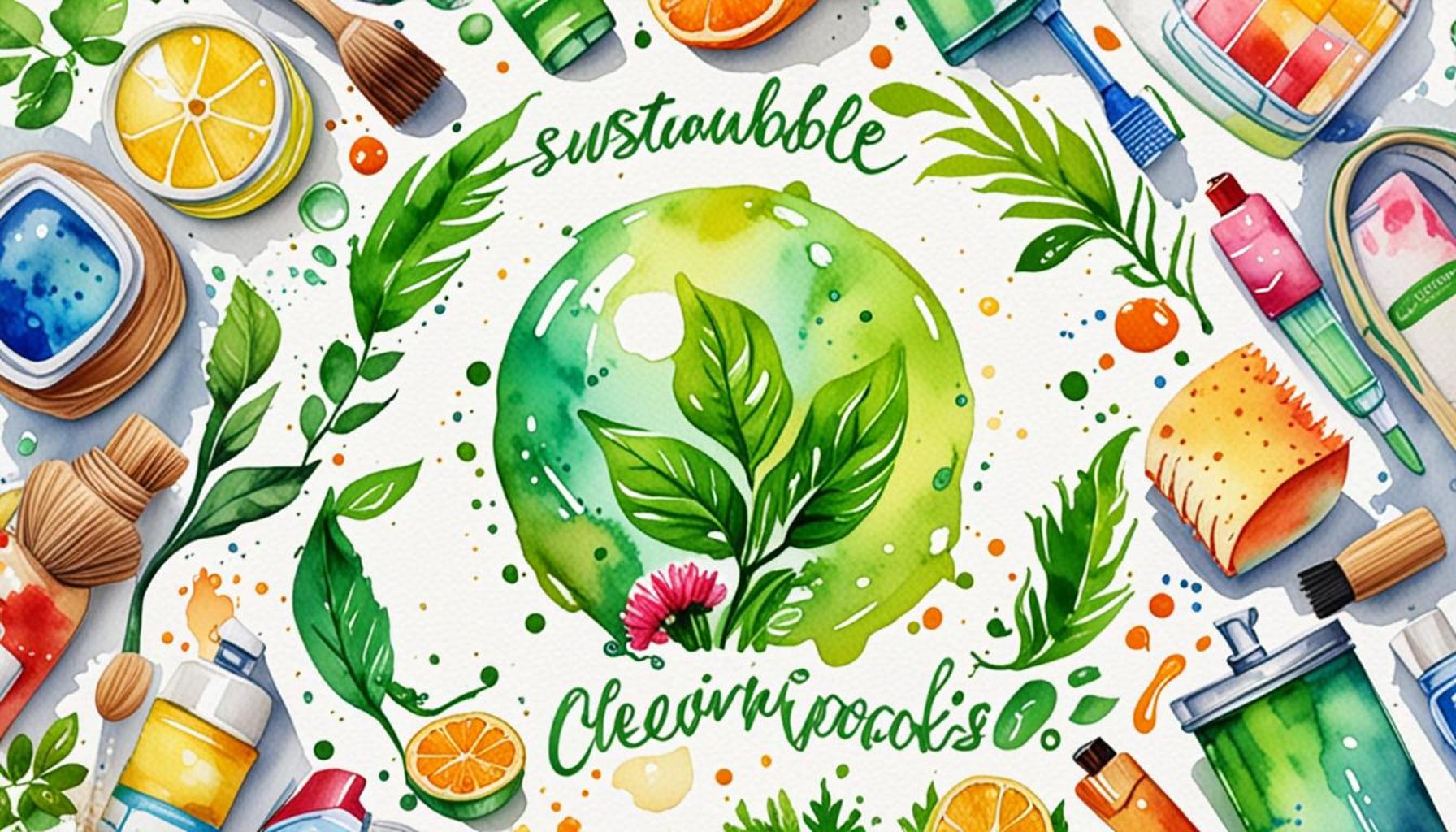Comparing Conventional vs Eco-Friendly Cleaning Products Benefits Challenges

In today’s fast-paced world, maintaining a clean home is essential for both health and well-being. However, the choice of cleaning products can significantly impact not only our living environment but also the planet. As consumers become more health-conscious and environmentally aware, the debate between conventional and eco-friendly cleaning products has gained traction.
Understanding the benefits and challenges of each type of product is crucial for making informed decisions. Here are some key factors to consider:
- Effectiveness: How well do these products clean various surfaces?
- Safety: Are the ingredients safe for families and pets?
- Environmental Impact: What are the long-term effects of these products on our planet?
- Cost: How do price points compare between conventional and eco-friendly options?
- Availability: Are eco-friendly products easy to find in local stores?
In this article, we will delve into these critical aspects and present a ranking of the Top 5 cleaning products in each category, helping you navigate the cleaning aisles with confidence.
Top 5 Comparison of Conventional and Eco-Friendly Cleaning Products: Benefits and Challenges
In the realm of home cleaning, a vigorous debate persists, leaving consumers at a crossroads: should they opt for traditional cleaning products or their eco-friendly counterparts? The market is saturated with both options, each promising to deliver a cleaner, healthier home. Amid this flood of offerings, it becomes vital for consumers to compare these two categories, understanding their benefits and the challenges that accompany them. This detailed analysis ranks key factors gleaned from their comparison, shedding light on ingredient safety, environmental impact, cost considerations, efficacy, and the influence of consumer awareness.
5. Ingredient Safety
The safety of ingredients is a hallmark difference between conventional and eco-friendly cleaning products. Conventional products often rely on synthetic chemicals for effective stain removal and disinfection. However, this chemical cocktail can pose significant health risks, including respiratory issues, skin irritations, and even long-term effects such as hormone disruption. Common ingredients in these products include phthalates, volatile organic compounds (VOCs), and ammonia, each carrying potential adverse effects.


Eco-friendly cleaning products, conversely, prioritize safer, natural ingredients. Derived from plant-based substances and essential oils, these products aim to deliver cleaning power minus the harmful side effects. For families with young children, pets, or individuals with sensitive health conditions, these natural alternatives offer a compelling advantage. Many are biodegradable, breaking down without leaving toxic residues that pollute natural resources.
Important points to consider:
- Conventional products may contain toxins like phthalates and VOCs, which are linked to various health concerns.
- Eco-friendly products generally use biodegradable components that minimize harmful residue.
- Safety data sheets favor eco-friendly cleaners owing to their gentler, safer formulations.
This critical aspect of ingredient safety, with significant health implications, rightly garners a significant place in our ranking.
4. Environmental Impact
Cleaning with environmental consciousness in mind poses a new set of challenges. The environmental footprint of cleaning products extends beyond their effectiveness in your home; it tracks their journey from production to disposal. Conventional cleaning solutions are often criticized for their environmental toll, contributing to pollution through chemical runoff and non-biodegradable packaging. Their reliance on synthetic chemicals can result in water contamination and depletion of natural resources.
Eco-friendly products counteract this impact by adopting sustainable practices. From sourcing ingredients responsibly to using recyclable or reusable packaging, these products aim to lessen their burden on the planet. Often crafted from sustainable resources, they seek to reduce carbon footprints, supporting ecological balance.
Key environmental considerations:
- Conventional cleaning agents can lead to water contamination and broader environmental harm.
- Eco-friendly brands focus not only on product effectiveness but on reducing their overall carbon footprint.
- Many eco-products are made from renewable resources, further exemplifying sustainability.
While environmental impact is a pressing concern, it ranks fourth, acting as a guidepost for environmentally conscious consumers.
3. Cost Considerations
Cost is undeniably a major influencer in choosing cleaning products. At first glance, conventional cleaners might appeal to budget-conscious shoppers due to their lower initial price. However, hidden costs come into play, from potential health care expenses due to prolonged exposure to their ingredients, to environmental restoration costs associated with their use.
Eco-friendly alternatives, though sometimes carrying a higher price tag, may offer economic advantages in the long run. Their multi-use advantages mean households may rely on fewer individual products, cutting down on redundancy in purchases. Furthermore, aligning with the philosophy that a healthier home reduces potential medical costs, these products justify their initial investment.
Financial factors to weigh:
- Conventional products might require more frequent purchases due to less effective or harsher formulations.
- Eco-friendly cleaners can often serve multiple purposes, eliminating the need for various specialized products.
- The long-term health benefits and environmental savings of eco-friendly products support their higher upfront cost.
The intricate discussion around cost indicates its substantial effect on consumer choices, meriting its third-place ranking in our comparison.
2. Efficacy and Performance
A common misconception persists that eco-friendly cleaning products lag in effectiveness compared to their conventional counterparts. Conventional products, with their robust advertisement of instantaneous and powerful cleaning results, have maintained their place as the traditional pillars of household cleaning.
Yet, as innovation in eco-friendly formulations gallops forward, this stereotype rapidly diminishes. Many eco-brands have developed products that tackle even the toughest cleaning challenges, equating and sometimes surpassing the performance of established conventional brands. Thorough science and meticulous formulation have enabled these products to combine safety and efficiency ingeniously.
Performance insights:
- Conventional products often yield immediate visible results, setting high performance expectations.
- The consumer transition towards eco-friendly products is growing, supported by improved formulations that satisfy rigorous cleaning demands.
- Some specialized eco-friendly brands now set industry standards for tough cleaning tasks, matching conventional options.
The continued enhancement of product efficacy ensures that this theme secures a critical position, ranking second overall.
1. Consumer Influence and Awareness
At the top of our comparison rests the dynamic and potent force of consumer influence. Increasingly informed and environmentally conscious, today’s consumers drive market transformations by seeking products that align with sustainable and health-focused lifestyles. This rise in awareness compels manufacturers to consider eco-friendly innovations in their product lines and business operations, realigning to meet consumer demand for transparency and ethical practices.
Highlighting the profound shift, manufacturers sensitive to consumer call-to-action are more likely to earn loyalty and trust, factors that resonate in a brand-driven economy. Social media and online communities amplify these voices, creating impactful movements for greener products.
Reasons for consumer influence:
- Heightened education around health and environmental impacts equips consumers to make informed, responsible choices.
- Social media and online forums serve as powerful platforms to express and amplify demand for eco-friendly options.
- Brand reputation now heavily depends on sustainable practices, with consumers prioritizing brands aligned with environmental ethics.
As consumer awareness continues to shape the industry landscape, it earns its place as the most influential factor in our comparison.
| Category | Description |
|---|---|
| Health Impact | Conventional cleaning products often contain harmful chemicals that can lead to respiratory issues and skin irritations, while eco-friendly products use natural ingredients that minimize health risks. |
| Environmental Benefits | Eco-friendly cleaning products generally have a lower carbon footprint and are biodegradable, contributing to less pollution and better sustainability compared to their conventional counterparts, which can contribute significantly to waste and chemical runoff. |
| Effectiveness | Many users believe that eco-friendly products may not be as effective against tough stains and grime; however, advancements in formulations have made these products increasingly effective with natural ingredients. |
| Cost Versus Value | While eco-friendly cleaning products can be more expensive upfront, their long-term benefits in reducing health risks and protecting the environment can provide significant value, prompting consumers to weigh the cost-effectiveness over time. |
In examining the health impacts of cleaning products, it’s crucial to note that conventional cleaners often contain potent chemicals like bleach and ammonia, which can pose various health hazards. In contrast, eco-friendly options utilize plant-based ingredients and essential oils that not only clean effectively but also contribute to a safer indoor environment. The environmental benefits of making the switch to green cleaning solutions cannot be overstated. Conventional cleaning agents contribute to water pollution and habitat destruction, primarily due to their chemical runoff. Eco-friendly products, by being biodegradable and sustainable, offer a proactive approach to conserving our planet’s resources while meeting the demands of sanitation.Effectiveness is a common concern, as many believe that eco-friendly products lack the muscle to tackle the hardest of stains. However, ongoing research and innovative formulations are shifting this perception, showcasing that natural ingredients can deliver not just on environmental promises but also on cleaning power. Regarding cost, while eco-friendly products might seem pricier at checkout, they reflect broader savings in health and environmental damages. The additional investment may lead to substantial long-term benefits, far outweighing the immediate savings associated with cheaper, traditional products. The exploration of traditional versus eco-friendly cleaning products highlights essential aspects worth considering for consumers aiming to make more enlightened purchasing decisions. Each product type brings forth its own set of benefits and challenges, necessitating careful contemplation on personal and ecological well-being.
Frequently Asked Questions about Conventional vs. Eco-Friendly Cleaning Products
What are the main differences between conventional cleaning products and eco-friendly ones?
The primary distinction between conventional and eco-friendly cleaning products lies in their ingredients and environmental impact. Conventional products often contain synthetic chemicals, which may include harsh detergents and artificial fragrances, potentially harmful to both health and the environment. In contrast, eco-friendly cleaners are formulated with biodegradable, non-toxic ingredients that are less likely to pollute water sources and harm wildlife. Additionally, eco-friendly products often boast sustainable packaging and production processes to minimize their carbon footprint.
Are eco-friendly cleaning products as effective as conventional ones?
The effectiveness of eco-friendly cleaning products can vary, but many are designed to perform as well as their conventional counterparts. While some consumers express concerns regarding the cleaning power of eco-friendly products, advances in green chemistry have led to more effective formulations. However, for certain tasks, such as disinfecting, traditional products may still be preferred due to their stronger antimicrobial properties. It’s essential to research and choose eco-friendly options that have been rigorously tested for efficacy.
Do eco-friendly cleaning products cost more than conventional ones?
Eco-friendly cleaning products often come with a higher price tag than conventional products due to the cost of sustainable sourcing and production. However, prices have become more competitive as demand for environmentally friendly options grows. While initial costs may be higher, using concentrated formulas that require less product per use can offset the price difference over time. Additionally, the investment in eco-friendly products can be viewed as contributing to environmental preservation.
What challenges do manufacturers face in producing eco-friendly cleaning products?
Manufacturers of eco-friendly cleaning products encounter several challenges, including sourcing sustainable, safe, and effective ingredients that meet consumer expectations for performance. Regulatory compliance, certification processes, and transparency in labeling can also add complexity. Additionally, balancing ecological sustainability with cost-effectiveness presents ongoing challenges, as companies strive to remain competitive while committing to ethical practices.
Conclusion
In the dynamic world of home upkeep, the comparison between conventional and eco-friendly cleaning products presents both advantages and challenges. As we strive for efficient house cleaning and maintenance, it becomes imperative to balance performance, health considerations, and environmental impact. Conventional products often boast powerful cleaning capabilities due to their synthetic chemicals, offering a reliable solution for tough stains and germs. However, the long-term effects on human health and their contribution to environmental degradation prompt serious concerns.
On the other hand, eco-friendly options emerge as a promising alternative, emphasizing sustainability and safety. These products typically utilize biodegradable components and natural ingredients, reducing harmful emissions and protecting water quality. Despite these benefits, questions about their efficacy and sometimes higher costs pose limitations for certain consumers, urging researchers and manufacturers to further innovate in this sector.
The growing awareness and demand for environmentally responsible options reflect a shift in consumer behavior, as more people prioritize their health and the planet. Educating consumers on the benefits and proper usage of these products can bridge the gap between perception and reality, fostering a more informed decision-making process. Moreover, government regulations and industry standards can play a pivotal role in steering the market towards sustainable practices.
In conclusion, while both product types have their place in effective household cleaning, integrating eco-friendly solutions into daily routines is not just a preference but a growing necessity. As consumers, staying informed and weighing our choices prudently will guide us towards creating a cleaner, healthier, and more sustainable future for our homes and generations to come. The dialogue around conventional versus eco-friendly cleaning products continues, with room for exploration and innovation that promises to enrich our understanding and approach to efficient home maintenance.


